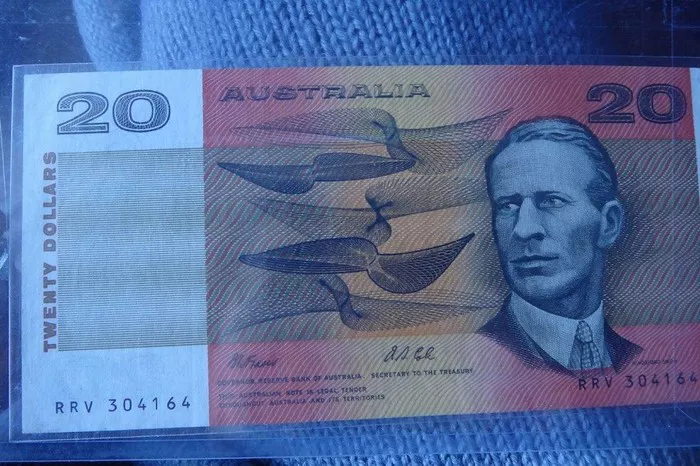Australia, like many countries, periodically updates its currency to enhance security features and combat counterfeiting. This process inevitably leads to the retirement of older banknotes from circulation. Consequently, individuals often find themselves wondering whether they can still exchange these older notes for their modern counterparts. In the case of Australia, the answer lies in the policies and guidelines set forth by the Reserve Bank of Australia (RBA). In this article, we delve into the specifics of exchanging old Australian banknotes, providing clarity for individuals seeking to navigate this process.
Understanding the Timeline:
The first step in determining whether you can exchange old Australian banknotes is understanding the timeline of currency transitions. Historically, the RBA has provided ample time for individuals to exchange old notes after the introduction of new currency. Typically, a transition period spanning several years is implemented to facilitate the exchange process seamlessly.
For instance, when the polymer banknotes were introduced in Australia in the 1990s, the RBA allowed for the gradual withdrawal of old paper-based banknotes over a significant period. Similarly, subsequent updates, such as the introduction of the Next Generation Banknotes series, have followed a similar pattern, providing ample opportunity for individuals to exchange outdated currency.
Validity of Old Banknotes:
The next crucial aspect to consider is the validity of old banknotes. While older Australian banknotes may no longer be legal tender for transactions, they often retain value and can be exchanged through designated channels. The RBA maintains that most old Australian banknotes can be exchanged for their equivalent value in modern currency.
However, it’s essential to note that there are exceptions to this rule. In some cases, particularly with extremely old or rare banknotes, the exchange process may differ. Individuals in possession of such notes may need to consult with the RBA or relevant financial institutions to determine the appropriate course of action.
Exchange Channels:
The RBA provides multiple channels through which individuals can exchange old Australian banknotes. These channels are designed to accommodate various preferences and circumstances, ensuring accessibility for all.
Banks and Financial Institutions: Most major banks and financial institutions in Australia offer currency exchange services, including the exchange of old banknotes. Individuals can visit their local bank branch and inquire about the process for exchanging outdated currency. It’s advisable to check with the specific institution beforehand to ensure they accept old banknotes and to inquire about any associated fees or requirements.
Reserve Bank of Australia: As the country’s central bank, the RBA also facilitates the exchange of old banknotes. While the RBA does not typically conduct direct exchanges with the public, they provide guidelines and support to authorized deposit-taking institutions (ADIs) for managing the exchange process. Individuals with significant quantities of old banknotes or unique circumstances may need to engage directly with the RBA or ADIs authorized to handle such transactions.
Mail Exchange: For individuals unable to visit a physical location, some institutions may offer mail exchange services. This allows individuals to send their old banknotes via mail for exchange. However, it’s crucial to research the reliability and credibility of such services before proceeding, as security concerns may arise.
Guidelines for Exchange:
When preparing to exchange old Australian banknotes, there are several guidelines individuals should adhere to:
Ensure banknotes are in acceptable condition: Banknotes that are excessively damaged, mutilated, or incomplete may not be eligible for exchange. The RBA provides guidelines regarding the acceptable condition of banknotes for exchange, including criteria such as cleanliness, absence of excessive tears or writing, and overall integrity.
Verify authenticity: It’s essential to ensure that old banknotes are genuine and not counterfeit. Counterfeit currency will not be accepted for exchange and may result in legal consequences. Individuals uncertain about the authenticity of their banknotes should seek professional verification before attempting to exchange them.
Be prepared to provide identification: When exchanging currency at banks or financial institutions, individuals may be required to provide valid identification, such as a driver’s license or passport. This helps verify the identity of the individual conducting the exchange and ensures compliance with regulatory requirements.
See Also Where To Invest When The Aussie Dollar Is Falling?
Conclusion:
In conclusion, while old Australian banknotes may no longer serve as legal tender for transactions, they often retain value and can be exchanged through designated channels. By understanding the timeline of currency transitions, the validity of old banknotes, available exchange channels, and guidelines for exchange, individuals can navigate the process with confidence. Whether exchanging currency through banks, financial institutions, or directly with the Reserve Bank of Australia, following these guidelines ensures a smooth and efficient exchange experience.


